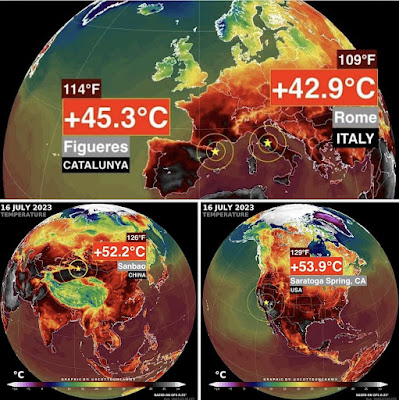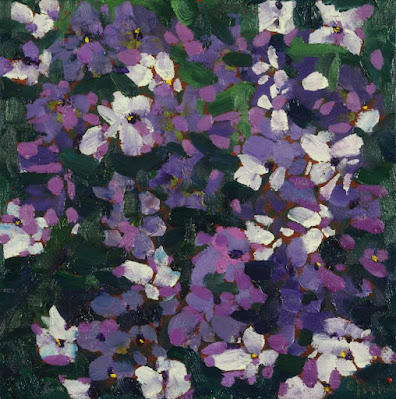 |
#2790 "July Queen Anne's Lace"
6x4 inches oils on canvas panel
|
There is some interesting symbolism to be found in the story of Queen Anne's Lace. The flower is sometimes referred to as the "bishop's flower" since it symbolizes safety, sanctuary, and refuge. Another interpretation is from when Queen Anne's Lace goes to seed. The remaining skeleton of the flower closely resembles a bird's nest which is the perfect symbol of the sanctuary of a happy home. Queen Anne's Lace is the perfect flower to brand the Singleton Sanctuary and I wish that I had done that before.
Queen Anne's Lace is said to have been named after Queen Anne of England, who was an expert lace maker. The Legend says that while crafting away, Queen Anne pricked herself with a needle and a single drop of blood fell from her finger onto the lace, leaving the dark purple spot. That same spot persists in the center of the flower if you look for it.

The Queen Anne's Lace plant is also known as wild carrot. It is a wildflower herb originally from Europe but now also found throughout North America. The plant is now considered an invasive weed in most places but it can actually be an attractive addition to the home in a wildflower garden. I do not plant it but as the same time, I don't discourage the flower. Queen Anne's Lace is everywhere throughout the Singleton Sanctuary. Queen Anne's Lace is of somewhat more importance to selected insects. Its nectar and pollen attracts small bees, wasps, flies, and beetles. A number of insects feed on the foliage and roots. The Queen Anne's Lace Plant – Growing Queen Anne's Lace And Its Care https://www.gardeningknowhow.com/ornamental/flowers/queen-annes-lace/queen-annes-lace-plant.htm
I started to paint this outside surrounded by the sounds of the birds and the bees but it was too hot. I retreated into the Singleton Studio with a couple of Queen Anne's Lace flowers that I put in a vase of water.
A concerning similar plant is the poison hemlock. Spotted water hemlock is considered the most poisonous of all Ontario weeds since it contains a very potent toxin, cicutoxin, that is present in all plant parts. There have been numerous accounts of sickness and death. Poison Hemlock (Conium Maculatum) is native to Europe and the Mediterranean region. This weed was spread into Ontario in the early 1980s in a seed lot of alfalfa.
Poison-hemlock stems have reddish or purple spots and streaks, are not hairy, and are hollow. Leaves are bright green, fern-like, finely divided, toothed on edges and have a strong musty odour when crushed. Flowers are tiny, white and arranged in small, umbrella-shaped clusters on ends of branched stems. Handle plant parts carefully; small amounts of toxins may be absorbed by rubbing eyes or touching mouth after contact with plants. Always wear gloves and wash hands thoroughly after handling the plant.
The most apparent difference between the two plants is their height. Poison hemlock grows much taller than Queen Anne's Lace and appears earlier in the year. While Queen Anne's Lace doesn't grow much taller than three feet, poison hemlock can grow to ten feet tall.
This was the first painting in the Queen Anne's Lace Trilogy: #2790 "July Queen Anne's Lace"; #2791 "Queen Anne's"; and #2792 "Another Side to Queen Anne".
For this and much more art, click on Pixels or go right to the Flowers Collection.
Warmest regards and keep your paddle in the water,
Phil Chadwick














































